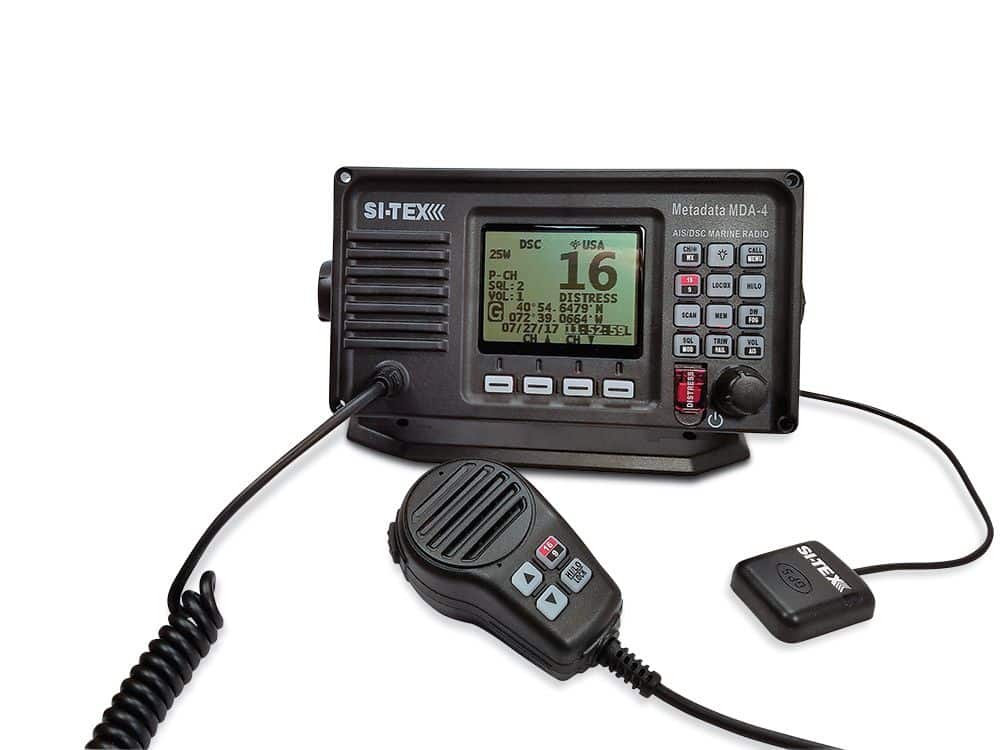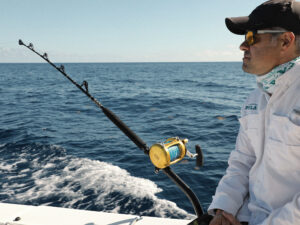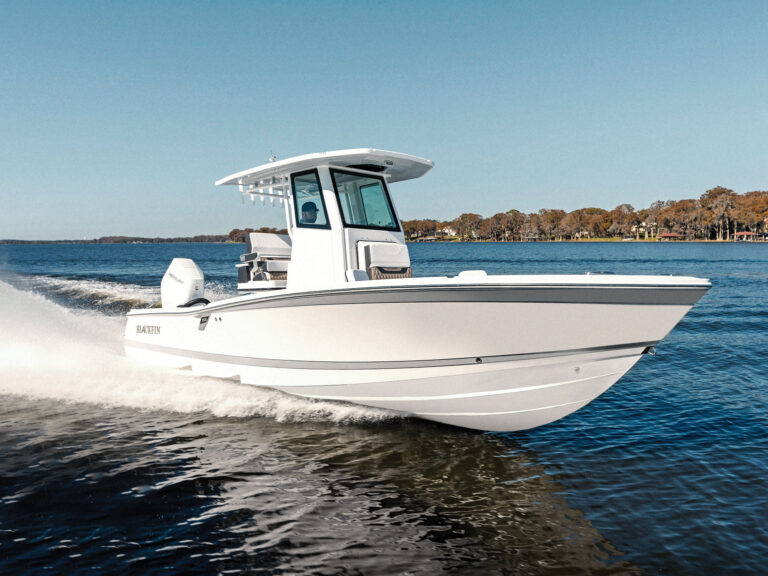
The VHF radio is undoubtedly the most common piece of electronic gear on saltwater fishing boats. It enables us to carry on casual conversations over substantial distances on marine radio channels, and is an invaluable fishing tool that can alert you to a hot bite in another location. But VHF marine channels for recreational boaters are primarily a safety item, because its mike is the first thing most boaters reach for in an emergency.
VHFs (very high frequencies) work on a line-of-sight basis, meaning that their FM signals don’t follow the curvature of the earth, so antenna height is critical. Basically, the higher your antenna (and the higher the receiving antenna), the farther you can talk. And talk we do. Unless you fish in a remote locale, you know how crowded VHF marine channels have become.
To make matters worse, lots of people are either ignorant of VHF protocol or simply choose to ignore it. We’ve all heard conversations on channel 16, the participants blissfully unaware of that marine channel’s hailing and emergencies-only nature – until they are abruptly informed of it by the Coast Guard.
Know the Rules of VHF Radios and Channels
Most of you are aware that you shouldn’t gab idly on channel 16, but do you know the rules regarding the other channels? For example, do you know which marine radio channel to use to request a bridge opening, and which channels are designated for commercial traffic and recreational ship-to-ship traffic? Do you know which VHF channel the government wants recreational boaters to use when hailing another boat? In these days of increasingly crowded airwaves, we thought it would be worthwhile to review the basics of VHF use.
Every VHF marine radio channel has a use designation. Almost every fishing town has its own channel on which the fleet communicates, and you might note in the following listing that you’ve been talking for years on a channel reserved for commercial traffic. If you don’t live in an area that sees a lot of commercial radio communication, you can probably get away with it. However, if you fish around a major metropolitan area, you’d better know which VHF channel to use.
By paying attention to which channels you’re supposed to be talking on, you can minimize the chances of interfering with someone else’s conversation. For safety purposes, boats are supposed to monitor channel 16 at all times. Channel 16 is also a hailing frequency, but the FCC wants recreational boaters to use channel 9 (designated as a hailing channel in 1992) in order to keep 16 open to distress calls.
VHF Radio Channel Etiquette
Now that you know which VHF channels are meant for public use, a word about etiquette is in order. We’ve all heard the incessant boor who talks non-stop on his radio, usually about nothing worth hearing, essentially tying up the channel so that no one else can get a word in edgewise. Transmissions should be brief and to the point, and you should never “walk on” another conversation by interrupting it. Wait your turn, or seek another channel.
It’s also important to remember to speak clearly and slowly into the microphone. People seldom get their point across by screaming into the mike. Take your time and you’ll be better off. Such advice applies equally to those of us who may be excited about catching a big fish and want to brag about it on the air, as well as those of us who might find ourselves in a real emergency and need help quick. Calm down and get the message out right the first time.
Then there’s the matter of licensing, or rather the lack thereof. The FCC decided in 1996 that “voluntary users” need no longer obtain a radio license. Voluntary users are defined as being boats less than 20 meters in length that don’t carry people for hire and don’t broadcast outside of U.S. waters. If you meet those criteria you can operate a VHF, radar and EPIRB without a license, but you still need one if you travel to another country in your boat such as the Bahamas, or if you have a single-sideband aboard.
Future-generation radios will most likely offer many more channels than those listed in the sidebar at left because the FCC has decided to reduce channel spacing from 25 MHz to 12.5 MHz, potentially doubling the number of available channels. Some of these will be designated DSC channels and will allow us to communicate in ways never before possible with older VHFs.
Most current VHF marine radios feature a NOAA weather-alert function that emits a tone whenever a weather advisory is broadcast, so that you can switch to a weather channel and get the details.
In the meantime, it’s good to know that even older VHFs still provide clear and reliable communications, and keep us in touch with the Coast Guard should an emergency arise. By observing some basic rules about channel selection and etiquette, we can all do our part to make talking on the radio less stressful and concentrate on what’s really important — catching more fish.
Which VHF Radio Channels Can I Use?
- Channel 16: For hailing, safety and emergency use only
- Channel 9: Pleasure-boat hailing channel
- Channels 68, 69, 71, 72 and 78A: Recreational working channels
- Channels 1, 7A, 8, 10, 11, 18A, 19A, 63, 77, 79A, 80A and 88A: Commercial channels (Pleasure boaters are supposed to stay off them.)
- Channel 13: For requesting bridge openings, although in some areas it’s channel 67.
- Channels 24, 25, 26, 27, 28, 84, 85, 86 and 87: Used by marine operators.
- Channel 22: Coast Guard working channel, the one where safety broadcasts are made after they alert you on channel 16 and ask you to switch over
- Channel 6: For Inter-ship safety communications
- Channels 1, 5, 12, 14, 20, 63, 65A, 66A, 73, 74 and 77: For port operations (Many of these are used by recreational boats in areas where no port operations exist.)
- Channel 70: A dedicated Digital Selective Calling (DSC) channel. DSC is an automated distress system that allows us to make digital phone calls through our VHFs. Is your VHF set up properly?









